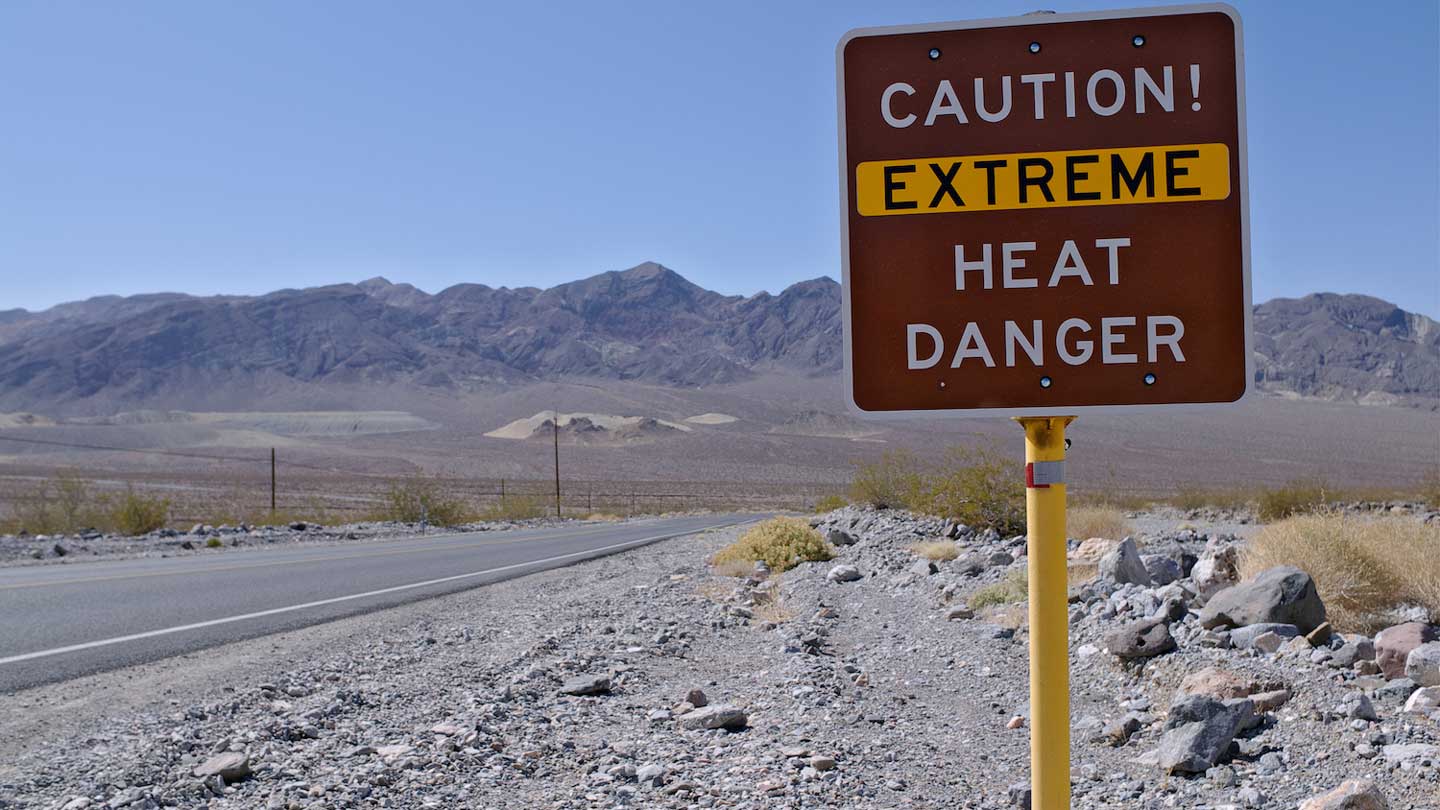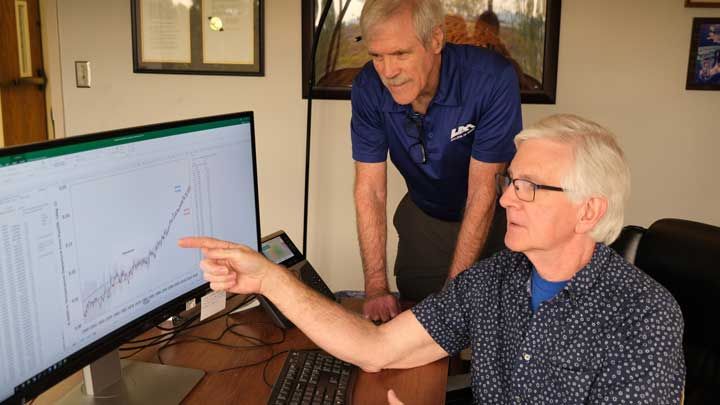
World’s record hottest temperature of 134 degrees F was recorded in Death Valley, Calif., on July 10, 1913.
Courtesy Shutterstock
A new study published in the Bulletin of the American Meteorological Society (BAMS) by researchers from The University of Alabama in Huntsville (UAH), a part of The University of Alabama System, calls for invalidating the world record hottest temperature of 134 degrees F recorded in Death Valley, Calif., on July 10, 1913. UAH Earth System Science Center (ESSC) Scientist Dr. Roy Spencer and ESSC Director and Alabama State Climatologist Dr. John R. Christy examined the meteorological and historical evidence behind the record and found the actual temperature on that date was likely a more typical 120 degrees F.
Over the years, several meteorologists have challenged the 134 degree F reading as not credible, but until now quantitative evidence has been lacking.
“Since I was examining the U.S. surface temperature dataset, John Christy asked me to look at the world record value,” Spencer notes. “He directed me to our co-author, climatologist William T. Reid, who has spent many years investigating the historical background of weather measurements at Greenland Ranch, Death Valley. Bill has scoured libraries and museums for old photos and letters between the Weather Bureau and the ranch superintendent, and became convinced the measurement was not made by Weather Bureau-approved equipment in an approved instrument shelter. After reading some old books about Death Valley and its culture in the late 1800s and early 1900s, I became convinced of that, too.”

(L-R): UAH’s Dr. John Christy reviews climate model data with Dr. Roy W. Spencer.
Courtesy Liz Junod
The authors used 100 years of temperature observations from weather stations at higher elevations – thus much cooler – to quantify just how much hotter Death Valley has been than those surrounding locations during July of each year since the mid-1920s. This data provided a range of plausible temperature values that could have occurred on July 10, 1913, resulting in a most likely temperature of 120 +/- 2 degrees F.
“In the early 1900s, there were only a handful of stations within 250 km of Death Valley, all of which have much cooler temperatures due to their much higher elevation,” Spencer explains. “But we demonstrated with 100 years of data between the mid-1920s up to the present that those higher elevation stations can be used to determine how hot the summertime air mass over the desert southwest was, and how closely temperatures in Death Valley could be estimated just using a range of observed temperature lapse rate adjustments over that time.”
The evidence also shed light on how a ranch foreman and volunteer cooperative observer for the U.S. Weather Bureau, Oscar Denton, likely recorded temperatures that were not actually measured with the official equipment provided by the Weather Bureau.
"We believe the foreman at Greenland Ranch, a colorful character named Oscar Denton, most likely replaced the temperatures measured by the Weather Bureau instrumentation with hotter values from a poorly sited thermometer on the veranda of the ranch living quarters," co-author Reid says.
Denton was the only inhabitant in Death Valley during the summers in the early 1900s, when it was too hot for workers to mine borax.
A hot reputation
“Almost anyone who has made outside air temperature measurements has noticed you can get excessively hot readings if the thermometer is in direct sunlight, or if it is placed next to a sunlit wall,” Spencer says. “One or both of these conditions were met on the north side of the veranda of the Greenland Ranch living quarters in the late afternoon in the early weeks of July.”
Correspondence from the ranch to the Weather Bureau office in San Francisco showed that other thermometers at the ranch house produced higher temperatures than what were measured in the instrument shelter.
“After reading several accounts in books, periodicals and newspapers about the reputation of Death Valley as possibly the hottest spot in the world, Bill Reid and I became convinced that the ranch foreman felt this was a reputation that needed to be defended,” Spencer says. “Long before the official instrumentation arrived at the ranch in 1911, the world already knew of claims that ranch thermometers had measured temperatures of 135 degrees F or higher. Then, after the 1911 installation of the approved instrument shelter, correspondence showed that all parties were a bit disappointed that the official readings did not match what was expected.”
The study also theorizes the construction of the living quarters could have further elevated temperatures taken there with thermometers, producing temperatures routinely 10 degrees hotter than the surrounding area, leading newspapers and magazines as early as the late 1800s to proclaim Death Valley temperatures well over 130 degrees F.
“My personal speculation is that the double-roof over the adobe ranch house would exhaust very hot air out the sides, and since the prevailing summer wind is from the south, that air would have been vented toward the north veranda,” Spencer says. "Not only was the 134 degree F temperature suspect, but we found many other days in those early years that were too hot, especially in the first two weeks of July, 1913, and all within the tenure of that one ranch foreman," the researcher says.
“While we will likely never know exactly how or why such hot temperatures were recorded, we have recommended that the world record status of that 134 degree F value be rescinded. But it will be up to a special committee of the World Meteorological Organization in Geneva to make that determination,” Christy, the Alabama State Climatologist, adds.
Spencer surmises the new record might end up being 130 deg. F, recorded twice in recent years at essentially the same location in Death Valley as the world record value.
The research was supported by the United States Department of Energy.